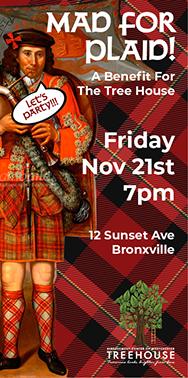From the Mayor: How the "Wayfair Decision" Transformed Sales Tax Collection

By Mary Marvin, Mayor, Village of Bronxville
Mar. 17, 2021: Internet sales in the past five years were increasing at a double-digit pace, and with the onset of Covid, the numbers went up 44% in 2020 to $861 billion in sales. At the same time, 21 major brick and mortar retail businesses, including J.Crew, JCPenney, Neiman Marcus, and Lord and Taylor, declared bankruptcy. As a consequence, states, and then through the obvious trickle-down, small local governments, saw revenues drop precipitously due to the decrease in local sales tax generation.
Without the taxation of internet business, many small communities would be struggling far more than they are today.
The financial salvation for economic year 2020 dates back to a Supreme Court case so called the “Wayfair Decision” of June 2018. Decided by a 5-4 vote, it did not receive the publicity it deserved based on its economic impact as it ushered in a whole new tax era.
To put it in context, the Wayfair decision was actually just the first name in the lawsuit joined by other familiar names, including Overstock and Newegg Inc. that was the culmination of years of eroding the standards set in Quill Corp vs. North Dakota, the 1992 Supreme Court decision that protected businesses selling in multiple states from having to collect sales tax in each state unless they had a physical presence such as a brick and mortar building. The Quill decision was set in a time when sales were done by mail order and all products shipped two weeks later in a box.
The idea that you could only tax sales where a retailer maintained a physical presence in a state was adjudicated many times prior to being affirmed in Quill in 1992. However, when Quill was decided, fewer than 2% of Americans had access to the Internet. However, as time passed and internet connection exploded, states became increasingly aware of the amount of revenue they were losing to interstate commerce. At one juncture, a consortium of states figured they were losing collectively $33 billion annually.
Each year the physical presence or “nexus” rule of interstate commerce became further removed from economic reality, and online sellers frankly gained an unfair advantage.
The various state laws to combat this proved to be a national hodgepodge. To put some consistency in the process was the main impetus for the Supreme Court to take the Wayfair case.
South Dakota became the defendant because early on, their lawmakers estimated revenue losses of $58 million annually, and as they had no state income tax at the time, substantial reliance was placed on sales tax and use tax revenue to fund essential services. Wayfair was an obvious target as they had $4.7 billion in sales nationwide in 2017.
The decision in Wayfair was sweeping. Now, if a company meets a state’s economic threshold, that’s enough to require the company to collect sales tax on the state’s behalf.
It is also important to note that Wayfair does not replace the physical presence or “nexus” standard. If a business does not meet a state’s economic threshold but does have a physical presence there, that business could still have sales tax collection requirements.
There are now 45 states that have enacted economic nexus thresholds. The other five – Alaska, Delaware, Montana, New Hampshire, and Oregon – have no sales tax. Most of the states have adopted $100,000 in income or 200 or more transactions as their threshold to level the playing field.
The European Union VAT shift in 2015 from taxation based on the location of the seller to the location of the customer recognized that the physical presence rule became further from economic reality. European countries were quite transparent in saying they wanted to recoup the tax dollars they knew they were missing.
The negative of this kind of tax compliance is that it can be particularly burdensome for midsize businesses. This concern was raised in the Mayfair case by Justice Kennedy, who wrote the majority opinion and noted those related compliance issues were not before the court in the instant case. As he stated, “The potential to arise in some later cases cannot justify retaining this artificial anachronistic rule that deprives states of vast revenues from major businesses.” These words were considered a signal that Wayfair Part II may eventually find its way into the courts. So stay tuned.
Photo by A. Warner
Editor's note: As a public service, MyhometownBronxville publishes articles from local institutions, officeholders, and individuals. MyhometownBronxville does not fact-check statements therein, and any opinions expressed do not necessarily reflect the thinking of its staff.
Government & History Directory
Bronxville is a quaint village (one square mile) located just 16 miles north of midtown Manhattan (roughly 30 minutes on the train) and has a population of approximately 6,500. It is known as a premier community with an excellent public school (K-12) and easy access to Manhattan. Bronxville offers many amenities including an attractive business district, a hospital (Lawrence Hospital), public paddle and tennis courts, fine dining at local restaurants, two private country clubs and a community library.
While the earliest settlers of Bronxville date back to the first half of the 18th century, the history of the modern suburb of Bronxville began in 1890 when William Van Duzer Lawrence purchased a farm and commissioned the architect, William A. Bates, to design a planned community of houses for well-known artists and professionals that became a thriving art colony. This community, now called Lawrence Park, is listed on the National register of Historic Places and many of the homes still have artists’ studios. A neighborhood association within Lawrence Park called “The Hilltop Association” keeps this heritage alive with art shows and other events for neighbors.
Bronxville offers many charming neighborhoods as well as a variety of living options for residents including single family homes, town houses, cooperatives and condominiums. One of the chief benefits of living in “the village” is that your children can attend the Bronxville School.
The Bronxville postal zone (10708, known as “Bronxville PO”) includes the village of Bronxville as well as the Chester Heights section of Eastchester, parts of Tuckahoe and the Lawrence Park West, Cedar Knolls, Armour Villa and Longvale sections of Yonkers. Many of these areas have their own distinct character. For instance, the Armour Villa section has many historic homes and even has its own newsletter called “The Villa Voice” which reports on neighborhood news.
Link to Village of Bronxville One Square Mile Monthly Newsletter
Village of Bronxville Administrative Offices
337-6500
Open 9:00am - 4pm excluding holidays and weekends
Bronxville Police Department
337-0500
Open 24 hours
Bronxville Parking Violations
337-2024
Open 9:00am - 4pm excluding holidays and weekends
Bronxville Fire Deparment
793-6400

















